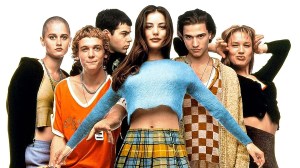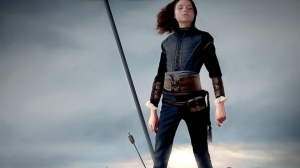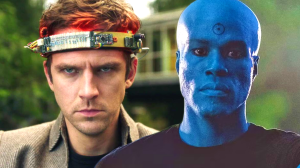DC has provided ComicBook.com with an exclusive preview of The American Way: Those Above and Those Below #2, out this week from writer John Ridley and featuring art by Georges Jeanty, inkers Danny Miki and Paul Neary, and colorist Nick Filardi.
Videos by ComicBook.com
The series is a follow-up to The American Way, a 2006 miniseries from Ridley and Jeanty. During a conversation at Comic Con, Ridley said that what excited him most about the original American Way was that the conversations about race and equality in the United States were “certainly delivered in a very fanciful way,” but that they “felt very real.”
“At that time, ten years ago, I was very fortunate and good things were happening for me. The series did well, it was critically well-received, but it’s not as though it was the best seller of the year, so it seemed like that was just a very nice part of what was going to be my history,” Ridley said. “In the last ten years, I’ve been very fortunate and very blessed in the other work that I do, but I have to say there’s really no blessing quite like having the opportunity to be involved in comic books.”
In the years between The American Way and its sequel, Ridley has indeed done pretty well in his other work: he won an Academy Award for Best Adapted Screenplay for the film 12 Years A Slave. That’s a film that took a long look at America’s history of slavery and didn’t blink — and while it’s about a century past slavery, The American Way also uses history to inform an examination of race relations in the U.S.
“As most of you know, the future is all speculative. We don’t know what’s going to happen in certain spaces and that’s what makes it exciting — because going into a story, ‘anything can happen’ is challenging,” Ridley explained. “It’s interesting. That’s the hallmark of fantasy and science. With history, we tend to know what happened. There are details, there are specifics that are always being excavated —- that’s why there are historians that remain — but there are elements of history that happened. I find that very fascinating to look back and say ‘Look, we got here, we’ve arrived at a place; could we have avoided it? Could we have done something different? What are these other elements of history that are not always given equal weight by the prevailing culture?’ So the idea with The American Way, ten years ago, the original story was set in 1962. It was based on some real history where Vice President Johnson at that time wanted one of the original Mercury astronauts to be a person of color, a black man, because he thought that the best way to stop the coming war, which was not with Russia or a Cold War, but was going to be on the streets of America, was to show people that in every walk of life, an individual succeeds and excels and shows their exceptionalism. People can still deny, but [evidence] just makes it that much harder. Johnson was in favor of that, Kennedy was not. That program didn’t go through, but that was the supposition going into The American Way: What if we had a group of superheroes whose primary function was to simply placate the masses, not in an over-Orwellian way, but to say ‘don’t worry Russia or the bomb or missiles in Cuba, know that America is strong because we have these heroes who are going out on a daily basis and winning the fight.’”
In a way that few comics partnerships get to do, Ridley and Jeanty are returning to the work more or less in real time, and looking at what the world of The American Way looks like a decade after the events of the first series. Some of it, particularly as it relates to Missy Devereaux, seems eerily prescient this week.
“The second series is set in 1972, so it’s set ten years later, and Jason, the black man who was brought in, what are his responsibilities ten years later?” Ridley asked his audience. “He was the one who broke away, and if one knows anything at all about the civil rights movements, just the schisms about passive resistance and nonviolence, and being more active, and what does that really mean? With Amber, she was a young girl who was very much an idealist, sort of a wonder girl in a way. Bright-eyed, bushy tailed…and she’s over it. Sort of the Bernadine Dorn, Angela Davis of the group, who just feels like talk is cheap and symbolic action is everything. Then Missy Devereaux, Old Miss, who represents The South, represented at that time ten years ago a sense for the progressive South. Ten years later, [she represents] southerners who believe progressives have gone too far, and that they have a right to stand up for their heritage. When they talk about progressivism, when they talk about multiculturalism, they are actually being anti-South, anti-White, anti-those kinds of things. So how do you balance somebody who says, ‘Hey, I was standing before all you people were; why don’t you all slow down a little bit and give us our due?’”
You can check out the preview pages in the attached image gallery and the solicitation text below.
The American Way: Those Above and Those Below #2 is due in stores on Wednesday, August 16. You can get a copy at your local comic shop then, or pre-order a digital copy here.
The conflict with political radicals that took one man’s life sits heavy with Jason. Accusations that, by continuing to be the superhero the American, he’s become a pawn for the government have taken on a new sharpness as the Civil Rights movement of the 1970s gains an added urgency. This call to do what’s right is one that his former ally Amber Waves has already answered by taking matters into her own hands and using her powers to protest injustice—and she’s already paying the deadly cost as the police and Federal agents attack her where she lives. The sequel to the hit comics series continues, crafted by writer John Ridley (TV’s American Crime and Guerrilla).








